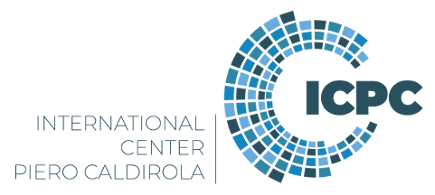Speaker
Description
M. Scholz1, J. Bielecki1, J. Błądek1, S. Conroy2, B. Coriton6, G. Croci3, J. Dankowski1 W. Dąbrowski4, D. Dworak1, G. Ericsson2, J. Eriksson2, A. Hjalmarsson2, A. Jardin1, R. Kantor5, A. Kovalev6, K. Dojko1, K. Król1, A. Kulińska1, A. Kurowski1,| B. Łach4, G. Mariano4, D. Mazon7,R. Mehrara1, D. Morawski1, M. Rebai3, F. Scioscioli3, M. Tardocchi3, G. Tracz1, A. Wójcik-Gargula1, U. Wiącek1
1 Institute of Nuclear Physics Polish Academy of Sciences, Radzikowskiego 152, PL-31342 Krakow, Poland
2 Department of Physics and Astronomy, Uppsala University, Lägerhyddsvägen1,75237 Uppsala, Sweden
3 Istituto per la Scienza e Tecnologia dei Plasmi, via Cozzi 53, Milano, Italy
4AGH University of Krakow, Faculty of Physics and Applied Computer Science
5Cracow University of Technology, 31-155 Krakow, Poland
6ITER Organization, Route de Vinon-sur-Verdon, CS 90 046, 13067 St. Paul Lez Durance Cedex, France
7CEA, IRFM F-13108 Saint Paul-lez-Durance, France
The ITER project is intended to generate (and sustain for several hundred seconds) thermonuclear fusion reactions based on either deuterium-deuterium (DD) or deuterium-tritium (DT) fusion reactions in plasma, producing neutrons of 2.45 and 14.1 MeV, respectively. Several neutron measurement systems will be installed on ITER to collect information on the neutron emission from the plasma and to derive a number of plasma parameters.
The High Resolution Neutron Spectrometer (HRNS) is part of that ITER neutron diagnostics
set. Such system can measure the time-resolved neutron spectrum for both DD and DT plasmas, providing plasma parameters, such as fusion power, power density, ion temperature, fast ion energy and their spatial distribution in the plasma core.
In particular, for ITER, the HRNS must determine the ratio of fuel ions (tritium to deuterium: nt/nd) in the plasma core (r/a <0.3). This quantity is crucial for protecting the machine and controlling the burning fusion plasma. Reliable measurements of this quantity are essential for ITER to meet the nt/nd requirements for the fusion power range from 0.5 to 500 MW and the nt/nd parameter range: 0.01 < nt/nd < 10. These requirements cannot be met by a single spectrometric technique, therefore, the following neutron spectrometers have been proposed: Thin Proton Recoil (TPR), Diamond Neutron Detectors, Backscatter Time-of-Flight (bToF) and Forward Time-of-Flight (fToF).
This presentation summarizes the current status and future perspectives of the system (HRNS) in ITER, including its geometry, positioning in Equatorial Port #1 (EQ#1) and collimation of the neutron beam. In its current positioning, HRNS has a single-channel collimator system perpendicular to the plasma, capable of performing neutron measurements, providing integrated data over the instrument’s field of view. The recorded signal is an integral of the local plasma conditions. The most fundamental aspect is the information contained in the neutron emission intensity. Hence, both the line of sight (LOS) and the size of the first wall aperture play an important role in this measurement, as they determine the neutron flux registered by the spectrometer. This undoubtedly affects the quality of the measured spectrum and, in turn, the issues related to the information contained in the neutron spectrum due to the measurement requirements of ITER.
The presentation will also include the results of neutron transport calculations and issues related to radiation safety, as well as some design problems of the HRNS system. Additionally, a new concept will be presented related to the use of Gas Electron Multiplier (GEM) detector to measure the neutron spectrum.
Finally, we would like to stress that the one of the objectives of this work is to show the process of developing methods for measuring the spectrum of fast neutrons over a wide range of energies and fluxes. This effort is the result of long-term cooperation between institutions in Poland, Sweden, and Italy involved in the ITER project.
Acknowledgements
This work was done as part of a project co-financed by ITER Organization, France and the Polish Ministry of Science and Higher Education under the program entitled “International Projects Co-financed"
The views and opinions expressed herein do not necessarily reflect those of the ITER Organization.

